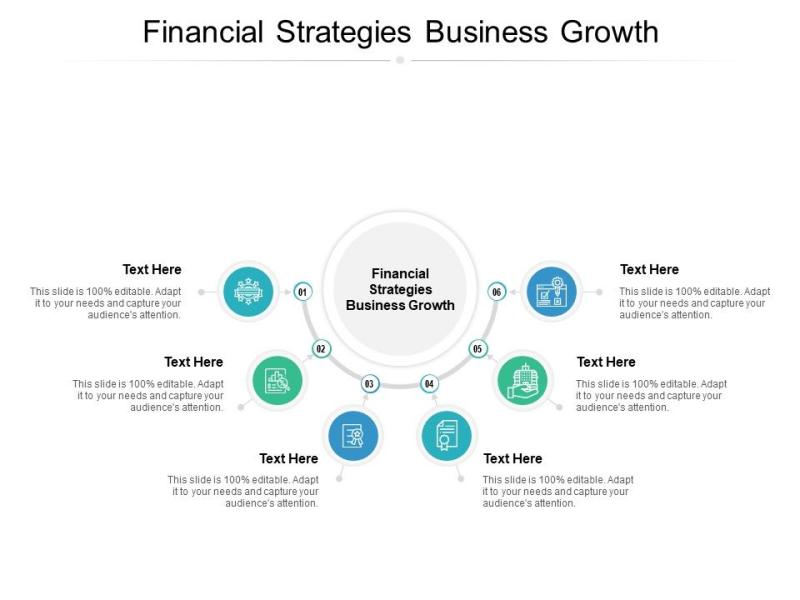What are financial strategies?
Financial strategies refer to a set of plans and actions designed to achieve specific financial objectives within an organization. These strategies are developed based on an in-depth understanding of the company's financial situation, market conditions, and overall business goals. Financial strategies play a crucial role in guiding decisions related to resource allocation, risk management, and the creation of value for stakeholders. Here are some key principles and aspects of executing financial strategies:
Principles of Financial Strategies:
Alignment with Business Objectives:
- Financial strategies should align with the broader objectives and goals of the organization. They should support the overall mission and vision of the company.
Risk Management:
- Effective financial strategies incorporate risk management measures. This involves identifying, assessing, and mitigating financial risks to ensure the organization's stability and resilience.
Optimal Capital Structure:
- Determining the right mix of debt and equity financing to optimize the cost of capital. This involves assessing the trade-off between financial leverage and risk.
Liquidity Management:
- Ensuring that the organization has sufficient liquidity to meet its short-term obligations. This involves managing cash flows, working capital, and maintaining access to credit facilities.
Cost of Capital Reduction:
- Implementing measures to reduce the cost of capital, which can involve refinancing debt, negotiating favorable terms with suppliers, or improving operational efficiency.
Value Creation for Shareholders:
- Financial strategies aim to create value for shareholders. This can be achieved through profitable investments, dividend policies, and other means that enhance shareholder wealth.
Adaptability and Flexibility:
- Financial strategies should be adaptable to changing market conditions and internal factors. Flexibility allows the organization to adjust its approach in response to economic shifts or industry changes.
Execution of Financial Strategies:
Strategic Planning:
- Develop a comprehensive strategic plan that outlines the financial goals and objectives of the organization over a defined time horizon.
Budgeting and Forecasting:
- Implement robust budgeting and forecasting processes to project future financial performance. Regularly compare actual results with forecasts to identify variances and make adjustments.
Capital Budgeting:
- Evaluate and prioritize potential investments using capital budgeting techniques such as Net Present Value (NPV) and Internal Rate of Return (IRR).
Financial Reporting:
- Implement effective financial reporting systems to provide timely and accurate information to stakeholders, including management, investors, and regulatory authorities.
Cost Control:
- Implement measures to control costs and improve operational efficiency. This may involve process optimization, resource allocation adjustments, or renegotiating contracts.
Financial Modeling:
- Use financial modeling to simulate different scenarios and assess the potential impact of various decisions on the organization's financial performance.
Continuous Monitoring and Evaluation:
- Regularly monitor and evaluate the effectiveness of financial strategies. This involves assessing key performance indicators (KPIs) and making adjustments as needed.
Communication and Transparency:
- Communicate financial strategies and performance transparently to internal and external stakeholders. This fosters trust and ensures that all relevant parties are informed.
Financial strategies are dynamic and should evolve with changes in the business environment. Successful execution requires a collaborative effort from various departments within the organization, including finance, operations, and executive leadership. Additionally, staying informed about industry trends and economic conditions is essential for making informed financial decisions and adjusting strategies accordingly.
Formulating Financial Strategies: Developing Plans to Achieve Financial Goals
Financial strategies are roadmaps that guide organizations towards achieving their financial objectives. They involve a comprehensive analysis of the organization's current financial position, future financial goals, and the strategies necessary to bridge the gap between the two.
Steps in formulating financial strategies:
Define financial goals: Clearly articulate the organization's financial goals, such as increasing profitability, reducing debt, or expanding into new markets.
Assess current financial position: Analyze the organization's financial statements, including the balance sheet, income statement, and cash flow statement, to understand its current financial health.
Identify strategic opportunities: Conduct market research, competitor analysis, and internal assessments to identify potential opportunities for growth and expansion.
Develop financial projections: Create financial forecasts that project the organization's future financial performance under different strategic scenarios.
Evaluate financial feasibility: Assess the financial feasibility of each strategic option, considering factors such as resource requirements, investment costs, and potential returns.
Select and prioritize strategies: Choose the most promising strategies that align with the organization's overall mission and objectives.
Implementing Financial Strategies: Executing Plans to Achieve Financial Success
Implementing financial strategies requires effective execution, ensuring that the plans developed are translated into tangible actions and results.
Key steps in implementing financial strategies:
Establish clear timelines and milestones: Break down the strategies into actionable steps with clear timelines and milestones to track progress and ensure timely completion.
Communicate strategies effectively: Clearly communicate the financial strategies and goals to all stakeholders, including employees, investors, and management, to foster alignment and commitment.
Allocate resources: Allocate the necessary resources, including financial, human, and technological resources, to support the implementation of the strategies.
Monitor and evaluate progress: Continuously monitor the implementation of the strategies and evaluate progress against established milestones and performance metrics.
Make adjustments as needed: Be prepared to adapt and make adjustments to the strategies as market conditions, internal factors, or external influences change.
Evaluating Financial Strategies: Assessing the Effectiveness of Financial Plans and Making Adjustments as Needed
Evaluating financial strategies is crucial for ensuring that they are achieving the desired outcomes and making timely adjustments as needed.
Methods for evaluating financial strategies:
Compare actual results to projections: Compare the organization's actual financial performance to the forecasted results under the implemented strategies.
Analyze financial metrics: Track key financial metrics, such as profitability, liquidity, efficiency, and debt levels, to assess the effectiveness of the strategies.
Conduct stakeholder reviews: Gather feedback from stakeholders, including employees, investors, and management, to evaluate the impact of the strategies on various aspects of the organization.
Identify areas for improvement: Identify areas where the strategies are not achieving the desired outcomes or where adjustments can be made to improve their effectiveness.
Make necessary adjustments: Based on the evaluation, make informed decisions to refine, adapt, or modify the financial strategies to ensure they continue to align with the organization's evolving goals and objectives.












